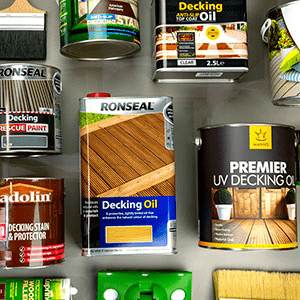Radiator Finish FAQ's
Is it better to use a solvent-based or water-based paint on radiators?
Many of the large paint manufacturers such as Dulux Trade and Crown Paints produce both water-based and solvent-based paints that are suitable for use on radiators. Modern formulations are as good as each other.
The main differences are usually to do with ease of application, odour of the product and the desired finish. Some paints are formulated to require several coats whilst others just need one. All the different formulations however have been tested to ensure that they give a long lasting, durable finish to radiators.
How long should I leave radiators turned off for after painting?
The period between painting a radiator and switching them back on will probably depend on the type of paint used, the natural temperature and humidity of the room and on the number of coats applied. Typically speaking, paint manufacturer's usually say 24 to 48 hours after the final coat but always check the drying instructions on the back of the tin before switching radiators back on.
Switching radiators on before the paint has dried may result in the finish remaining tacky for longer. In the worst cases it may ruin the final finish.
What is the best radiator paint?
Knowing which is the best radiator paint depends on the type of finish required. For a gloss finish, consider Dulux Trade Quick Dry Gloss or Dulux Trade High Gloss. For an eggshell finish, consider Dulux Trade Eggshell or for a flatter, more matt-like finish consider Dulux Trade Satinwood or Dulux Trade Quick Dry Satinwood.
Ronseal also produce a specific radiator paint, Ronseal Stays White Radiator Paint or in a handy aerosol can for ease of application: Ronseal Quick Drying Radiator Paint.
Alternatively, Crown Paints. For a gloss finish, consider Crown Quick Dry Gloss or Crown Solo One Coat Gloss. For a satin finish, try Crown Non Drip Satin or Crown Solo One Coat Satin.
Advice needed on which radiator paint stripper to use?
When removing paint from radiators, it's important to cover and protect all surrounding areas, especially if the radiator is being stripped in situ rather than being removed.
2 paint strippers that our customers have used to good effect are Paint Panther Paint and Varnish Remover and PeelAway 7 Paint Remover. The first is a traditional gel paint stripper whilst PeelAway is a poultice or paste system.
Due to the differences in paint formulations, we always recommend doing a small test area first to establish the effectiveness of a product. Peelaway comes in a handy PeelAway 1 and 7 Sample Twin Pack whilst Barrettine Paint Panther is available in a small 250ml tin that is ideal for testing.
What sort of applicator can I use to paint radiators?
When applying paint to a radiator, it's important to wash any brushes thoroughly before painting. This is also true for new brushes and rollers straight out of the pack as they often have some lose bristles or fluff from the manufacturing process. Washing them thoroughly first will dislodge and remove any lose bristles and roller fibres so they don't land up in the painted radiator finish.
As a general rule, we recommend using a natural bristle brush with solvent-based paints and synthetic bristle brushes such as the ProDec Premier Synthetic Brush with water-based paints. In terms of rollers we recommend using a microfibre roller such as the Marshall Microfibre Roller or Osmo Premium Microfibre Rollers.
Disclaimer: Whilst every attempt has been made to provide product information that is as accurate as possible, it's important to clarify that trees and the wood that they produce can be affected by many factors. For example, the same species of tree grown in the same wood, even in close proximity, will be affected by age along with the amount of sunlight and water they receive. Other naturally occurring biological and environmental factors will also influence the density and grain of the wood as well as the moisture and oil content of the timber. No two trees are the same, meaning each piece of wood has the potential to look and react differently to the same wood finish. For example, product adhesion, colour variations, absorption rates and sheen levels. It is for this reason that we always strongly recommend carrying out test areas before starting any project


